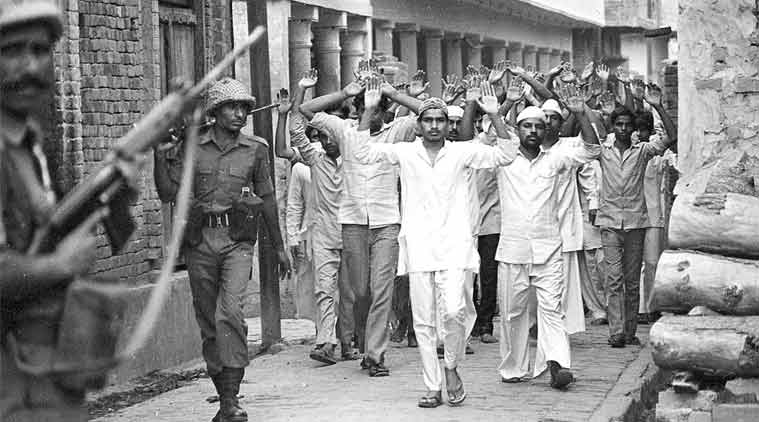A single tale
For over 30 years, the people of Hashimpura have been reliving the killings

Over 40 Muslims were killed in 1987, allegedly by PAC. (File Photo)
Last month, the memories of Hashimpura came back to me after the Delhi High Court sentenced 16 former PAC personnel to life in prison after finding them guilty of murdering 42 people. The verdict came late, more than 30 years after the massacre. Three of those sentenced died before they could learn of their conviction. Whether or not the verdict was “justice” is an open question. As a journalism student in 2016, I had visited Hashimpura for my first out-station assignment. What surprised me most was how over those five days, the tale of a fateful Friday — May 22, 1987 — was repeated in an entire community, across genders and generations, almost an incantation.
Zarina, 61, remembers exactly what happened on “Alvida”, the last Friday in the month of Ramzan in 1987: “PAC personnel barged into our house from the terrace and started assaulting the men in the house. They lined up all the men on the main road and then took most of them to police stations, barring the 42 who were taken to Ghaziabad. The 42 men were lined up and shot at in cold blood.” Zarina’s husband was one of the 42. He did not survive the shooting. Arif, born 15 years after the Hashimpura massacre, tells the same story, almost verbatim. “I have heard the tales so many times, it’s almost as if I was there.” Arif’s father was kept in jail for three weeks, tortured and later released.
Out of the 42, four survived the shooting to tell the story of what happened to the men in the truck that was driven by the PAC personnel to Ghaziabad’s Upper Ganga Canal. Their testimonies have been repeated multiple times — in courts and in interviews; to their families, friends and community.
And the story of how the massacre changed the life of each family is different. Some were about how they survived the trauma, and hardship, of losing their primary breadwinners. Others were about children having to give up on their education and even young girls having to become domestic help to support their families. It was clear that each person’s story of that Ramzan had become folklore for the people of Hashimpura.
The people of Hashimpura, too, have lived and died while waiting for a conviction of the people responsible for killing 38 men. As generations waited, the story of that night became the only story for a community — at chai shops, barber shops and even at their homes. Hajira, whose husband was not in the truck that held the slain men, and survived police torture, had told me, “We know most of the people weep after talking about it. But, it is the only story we know.”
The account of their tragedy is what has defined residents. The dead did not know why they were being killed. The story is all that those who survive have, all that is left of their loved ones who did not.
The people of Hashimpura were killed because the killers knew they could get away with it — an impunity that lasted for three decades. Because they knew the state would shield them for killing Muslim men, especially when a narrative painting them as “violent and aggressive” is propagated. The state did manage to shield the PAC personnel through a botched investigation by the Crime Branch Central Investigation Department (CBCID). In 2017, revelations made by an RTI query revealed that the PAC men, now convicted, remained in service and there was no mention of them being accused in the Hashimpura case in their Annual Confidential Report (ACRs).
Perhaps the tales of that night have become so central to the community because, along with a reliving of the trauma, each telling was also a catharsis — and hope that their pain would be acknowledged by those delivering justice. After each hearing, residents would wait for the ones present in court to tell them what the court said. They were repeatedly disappointed for 30 years, until the Delhi High Court verdict.
For the people of Hashimpura, perhaps, there is finally a closure and hopefully, a chance to tell new stories.
asad.rehman@expressindia.com
For all the latest Opinion News, download Indian Express App
More From Asad Rehman
- The case of the balloon in Mathura: A mela, 3 cities and a China stickerWhat set three policemen off on this search was a post that started doing the rounds of social media on October 21 about a balloon,…
- We understand difficulty: Rohingya pitch in to help Kerala flood victimsTaking a cue, other Rohingya settlements in the country also decided to start collecting money for the cause. ..
- Uttar Pradesh: Forced to stop selling non-veg, restaurants near Kanwar yatra route take a hitAdditional Superintendent of Police of Meerut City, Kumar Ran Vijay Singh, however, denies any such order asking restaurants to stop selling meat...







































No hay comentarios:
Publicar un comentario